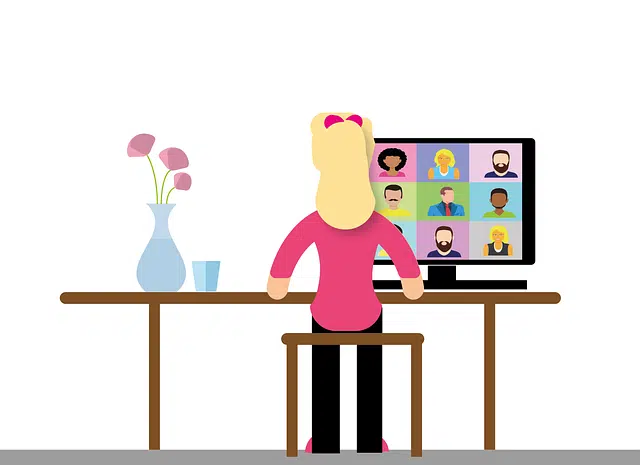
Videoconferences are communications that involve the transmission of image and sound.
A videoconference is a communication that is established through a telecommunications network and that involves the transmission of sound and image . That is to say: two people holding a video conference can hear and look at each other through a screen.
For example: “Please record in my agenda that tomorrow at 10 I will have a videoconference with the manager of the Madrid branch,” “The president participated in a videoconference with some deputies,” “The accused, from hiding, provided a video conference.”
Video conferencing is a very useful system to communicate with people who are in different places. By allowing the bidirectional transmission of images and sound, this type of communication is more complete than traditional telephony.
Examples of video conferences
In the business field, videoconferencing allows the development of virtual meetings . Suppose that a Spanish company and a German company analyze a possible commercial agreement. Their respective presidents, instead of traveling and moving to meet, begin to hold a series of videoconferences. Finally, the managers manage to seal the agreement.
Another very common example today takes place in the development of software and hardware by companies with international presence . In the particular case of Nintendo, whose headquarters are located in Japan, it usually holds video conferences with teams from other countries to supervise the development of those games that use its characters or that will be published exclusively on its consoles.
Outside of business relationships, videoconferencing is an almost indispensable tool to keep sentimental ties alive today, or at least to make the distance less difficult , especially when it comes to definitive trips or for very long periods. While in the past people could get used to going months and years without seeing their loved ones again, today's technology allows us to feel very close to them, wherever we are .

Videoconferencing is very useful in the corporate environment.
Historical development
It is important to note that the first experiments related to communication through audiovisual media date back to the mid-20th century , although at first they were reserved for the field of research, given the high costs and the absence of infrastructure in cities for its massification. .
It was only in the 1990s that videoconferencing reached the Internet, and once the average speed of connections reached a certain point it was possible to jump to high definition, which took place in 2005.
Other issues related to videoconferencing
In addition to chatting with other people and seeing them on the screen, video conferencing is very useful for sharing documents and commenting on them while authorized participants view them, edit them and make all kinds of annotations on them. This function is usually called "screen sharing", since it is a powerful tool for a user to show others what they see on their monitor, or certain parts that they define themselves, giving them certain permissions to maintain order. and avoid accidental loss of information.
Although several free programs give their users the possibility of making video calls, it is normal that they also offer paid plans to increase the image quality or the limit of participants, among other factors.
Typically, videoconferencing takes place over the Internet . With programs and applications such as Skype or Facebook video calls, users can communicate for free, without having to pay for an extra service beyond the Internet connection.
It is important to mention that videoconferencing often faces technical problems , such as poor quality images or poor sound. These drawbacks are usually linked to the slowness of the connection , which makes it difficult to transmit data optimally.
